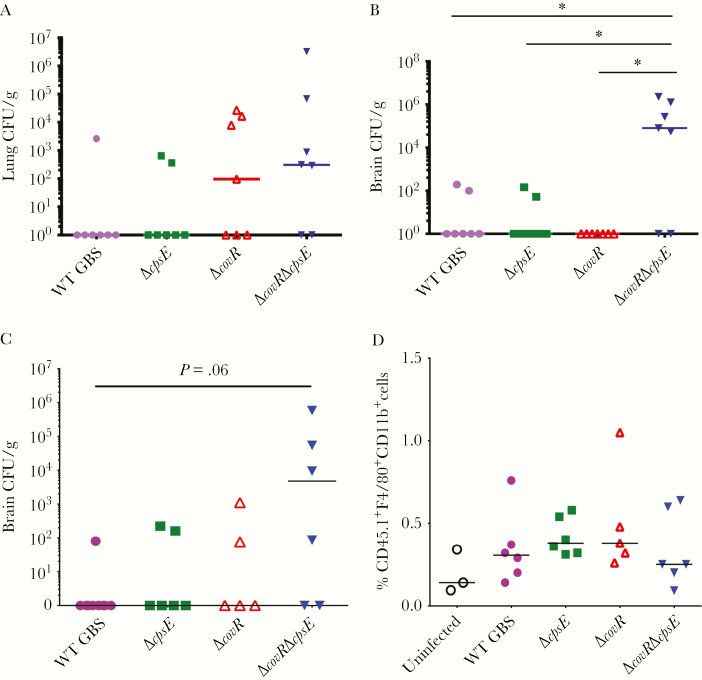Figure 4.
Intracellular acapsular and hyperhemolytic group B streptococci (GBS) exhibit increased blood–brain barrier penetration. A and B, Bone marrow–derived macrophages (BMDMs) containing 107 intracellular GBS colony-forming units (CFU) (wild-type [WT], ΔcpsE, ΔcovR, or ΔcovRΔcpsE) were intravenously injected into WT C57BL6/J mice (n = 7/group). At 48 hours postinfection, lungs (A) and brains (B) were harvested for bacterial enumeration. *P ≤ .01, Dunn multiple comparison test following analysis of variance (ANOVA). C and D, WT C57BL6/J mice (n = 6/group) expressing CD45.2 were infected intravenously with 2.5 × 106 BMDMs from CD45.1 mice containing 105–6 intracellular GBS (WT, ΔcpsE, ΔcovR, or ΔcovRΔcpsE). Uninfected refers to mice injected with CD45.1 macrophages not containing intracellular GBS. The number of CD45.1 BMDMs was kept constant between the groups to examine blood–brain barrier penetration of macrophages. At 24 hours postinfection, brains were processed for enumeration of GBS CFU (C) and for CD45.1 macrophages (D). Dunn multiple comparison test following ANOVA was used to estimate statistical significance.

